-
 bitcoin
bitcoin $106680.127705 USD
0.67% -
 ethereum
ethereum $3615.722480 USD
-0.65% -
 tether
tether $0.999925 USD
-0.04% -
 xrp
xrp $2.550072 USD
5.91% -
 bnb
bnb $1002.572269 USD
-0.90% -
 solana
solana $168.746669 USD
1.08% -
 usd-coin
usd-coin $0.999832 USD
-0.03% -
 tron
tron $0.297244 USD
1.97% -
 dogecoin
dogecoin $0.182965 USD
0.71% -
 cardano
cardano $0.600432 USD
2.56% -
 hyperliquid
hyperliquid $41.439691 USD
-1.57% -
 chainlink
chainlink $16.548399 USD
2.40% -
 bitcoin-cash
bitcoin-cash $524.993680 USD
3.45% -
 stellar
stellar $0.302259 USD
4.10% -
 zcash
zcash $539.994871 USD
-16.31%
What are common mistakes to avoid when using the TRIX indicator?
Avoid using the TRIX indicator in isolation—always confirm signals with trend analysis, volume, and other tools to reduce false entries and improve trade accuracy.
Aug 03, 2025 at 07:01 am
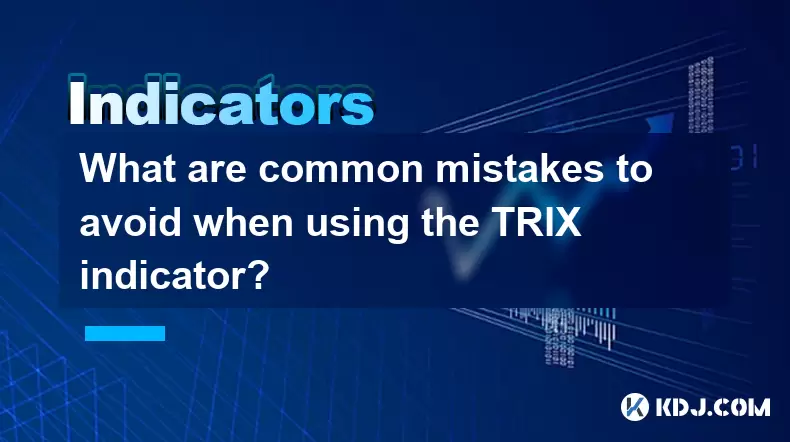
Understanding the TRIX Indicator and Its Purpose
The TRIX (Triple Exponential Average) indicator is a momentum oscillator designed to filter out short-term price noise by applying a triple exponential moving average to price data. It helps traders identify potential trend reversals, overbought or oversold conditions, and momentum shifts. Despite its utility, misuse or misunderstanding of the TRIX can lead to poor trading decisions. One common mistake is treating the TRIX as a standalone signal generator. While it provides valuable insights into momentum, it should not be used in isolation. Relying solely on TRIX crossovers or divergences without confirmation from price action, volume, or other technical tools increases the risk of false signals. Traders must integrate TRIX into a broader analytical framework to enhance reliability.
Ignoring the Context of the Market Trend
A frequent error is applying TRIX signals without considering the prevailing market trend. For example, a positive TRIX crossover in a strong downtrend might appear as a buy signal, but it could simply be a temporary bounce within a larger bearish structure. Entering long positions based on such signals often results in losses. Conversely, in a strong uptrend, a negative crossover may be ignored if the broader trend remains bullish. To avoid this mistake, traders should use trend-following tools like moving averages or trendlines to determine the dominant direction. Only signals that align with the trend should be prioritized. This contextual filtering reduces the likelihood of acting on misleading TRIX movements.
Misinterpreting Divergences
Divergence between price and the TRIX line is often cited as a powerful reversal signal. However, a common mistake is acting on divergences too early. For instance, when price makes a higher high but TRIX makes a lower high, it indicates bearish divergence. Traders might interpret this as an immediate sell signal. Yet, in strong trends, such divergences can persist for extended periods without a reversal occurring. The market may continue moving in the original direction, leading to premature exits or entries. To mitigate this, traders should wait for additional confirmation, such as a break of a key support/resistance level or a candlestick reversal pattern, before acting on divergence. Also, ensure the divergence occurs after a significant price move, not during minor fluctuations.
Using Inappropriate Settings for the TRIX Period
The default TRIX period is typically set to 14 or 15, but this may not suit all assets or timeframes. A frequent mistake is using the same settings across different markets without adjustment. For example, applying a 14-period TRIX on a 1-minute chart may generate excessive noise and false signals due to over-sensitivity. On the other hand, using it on a weekly chart with the same setting might result in delayed signals. Traders should optimize the period based on the asset’s volatility and the chart timeframe. For highly volatile cryptocurrencies, a longer period (e.g., 20–30) may smooth out erratic movements. For lower timeframes, a shorter period (e.g., 8–12) could be tested, but only after backtesting. Adjusting the period should be done cautiously and validated with historical data.
Failing to Combine TRIX with Volume or Confirmation Indicators
Another critical mistake is neglecting volume analysis when interpreting TRIX signals. A bullish TRIX crossover accompanied by low trading volume may lack conviction and is more likely to fail. Conversely, a crossover with a surge in volume adds credibility to the signal. Traders should use volume indicators like OBV (On-Balance Volume) or VWAP to confirm the strength behind TRIX movements. Additionally, combining TRIX with other oscillators such as RSI or MACD can improve accuracy. For example, a TRIX crossover occurring when RSI exits oversold territory strengthens the buy case. Using multiple confirming tools reduces the probability of acting on false momentum shifts.
Overlooking Signal Line Crossovers and Histogram Interpretation
The TRIX indicator includes a signal line, usually a 9-period EMA of the TRIX line itself. A common error is focusing only on the TRIX line crossing zero while ignoring crossovers with its signal line. The TRIX crossing above its signal line is a bullish momentum signal, while crossing below indicates bearish momentum. Some traders also use the histogram derived from the difference between TRIX and its signal line. Expanding histogram bars show increasing momentum, while shrinking bars suggest weakening momentum. Misreading these elements—such as entering a trade when the histogram is contracting—can lead to poor timing. Always monitor both the zero line and signal line crossovers, and assess the histogram’s slope and magnitude for momentum context.
FAQs
Can the TRIX indicator be used effectively in sideways markets?The TRIX indicator tends to produce frequent and conflicting signals in ranging markets due to its sensitivity to momentum changes. In such environments, the TRIX line may oscillate around zero without clear direction, leading to whipsaws. It is advisable to combine it with range-bound indicators like Bollinger Bands or Stochastic to identify overbought or oversold zones within the range. Avoid acting on TRIX crossovers unless they coincide with price reaching clear support or resistance levels.
How can I backtest TRIX settings for a specific cryptocurrency?To backtest TRIX settings, use a trading platform that supports strategy testing, such as TradingView or MetaTrader. Apply the TRIX indicator with adjustable periods and signal line settings. Define entry and exit rules based on TRIX crossovers or zero-line crosses. Run the test over a historical price chart of the cryptocurrency, ensuring the data includes various market conditions. Evaluate performance using metrics like win rate, profit factor, and drawdown. Adjust the period incrementally and retest until optimal results are achieved.
Is TRIX suitable for scalping strategies?TRIX can be adapted for scalping, but only with careful parameter tuning and strict risk management. Use a shorter period (e.g., 6–9) and apply it on lower timeframes like 1-minute or 5-minute charts. Focus on signal line crossovers and histogram momentum shifts. However, due to the fast-paced nature of scalping, false signals are more common. Always pair TRIX with tight stop-loss orders and real-time volume confirmation to improve execution accuracy.
What should I do if TRIX gives conflicting signals on different timeframes?When TRIX signals conflict across timeframes, prioritize the higher timeframe. For example, if the daily TRIX shows a bearish crossover but the hourly shows a bullish one, the daily trend should dominate. Use the higher timeframe’s TRIX direction to filter trades on lower timeframes. This hierarchical approach ensures alignment with broader market momentum and reduces countertrend risks.
Disclaimer:info@kdj.com
The information provided is not trading advice. kdj.com does not assume any responsibility for any investments made based on the information provided in this article. Cryptocurrencies are highly volatile and it is highly recommended that you invest with caution after thorough research!
If you believe that the content used on this website infringes your copyright, please contact us immediately (info@kdj.com) and we will delete it promptly.
- Uniswap (UNI) Price Pumps: Is This the Cryptocurrency Game Changer?
- 2025-11-11 16:50:02
- WEFT Token: Revolutionizing the iGaming Ecosystem for New Investors
- 2025-11-11 14:50:00
- CFTC, Crypto, and Congress: Navigating the Murky Waters of Market Oversight
- 2025-11-11 10:55:01
- XRP: Is This Crypto's Best-Performing Asset?
- 2025-11-11 06:45:01
- Navigating the Crypto Maze: Economic Schedules, Treasury Auctions, and the Bitcoin Beacon
- 2025-11-11 07:40:01
- BitMine, ETH, and Assets: Navigating the Crypto Landscape Like a New Yorker
- 2025-11-11 13:00:02
Related knowledge

What's the best way to learn the TRIX indicator?
Nov 10,2025 at 12:39pm
Understanding the Basics of the TRIX Indicator1. The TRIX (Triple Exponential Average) indicator is a momentum oscillator designed to filter out short...
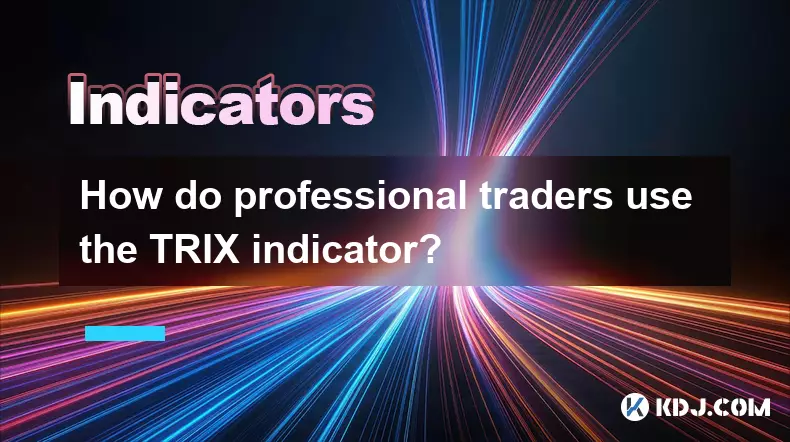
How do professional traders use the TRIX indicator?
Nov 06,2025 at 04:40pm
Understanding the TRIX Indicator in Crypto TradingThe TRIX (Triple Exponential Average) indicator is a momentum oscillator used by professional trader...
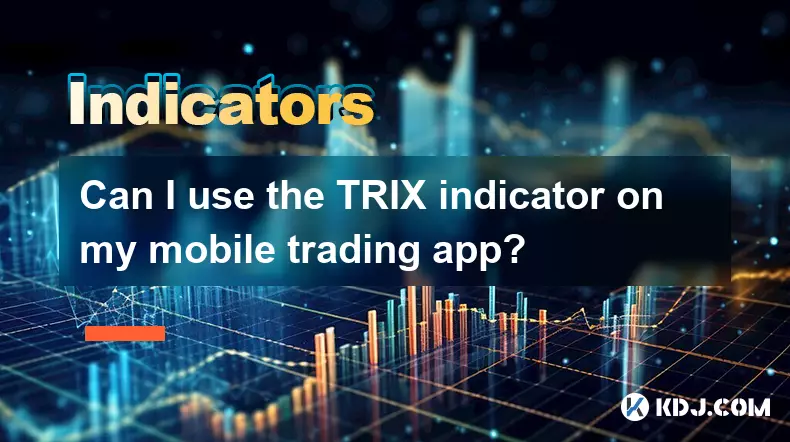
Can I use the TRIX indicator on my mobile trading app?
Nov 07,2025 at 07:40pm
The TRIX indicator, a momentum oscillator designed to filter out short-term fluctuations and highlight long-term trends, has become increasingly popul...
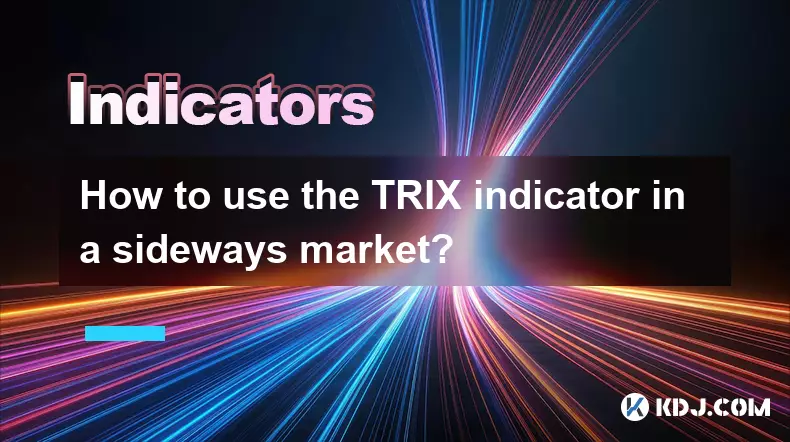
How to use the TRIX indicator in a sideways market?
Nov 10,2025 at 03:00pm
Bitcoin’s Role in Decentralized Finance Evolution1. Bitcoin remains the cornerstone of decentralized finance, serving as both a store of value and a b...
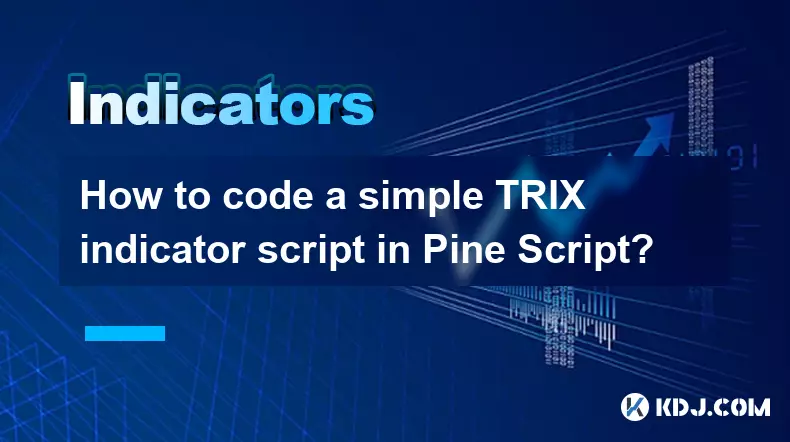
How to code a simple TRIX indicator script in Pine Script?
Nov 07,2025 at 06:20am
How to Code a Simple TRIX Indicator in Pine Script The TRIX (Triple Exponential Moving Average) indicator is widely used in cryptocurrency trading to ...
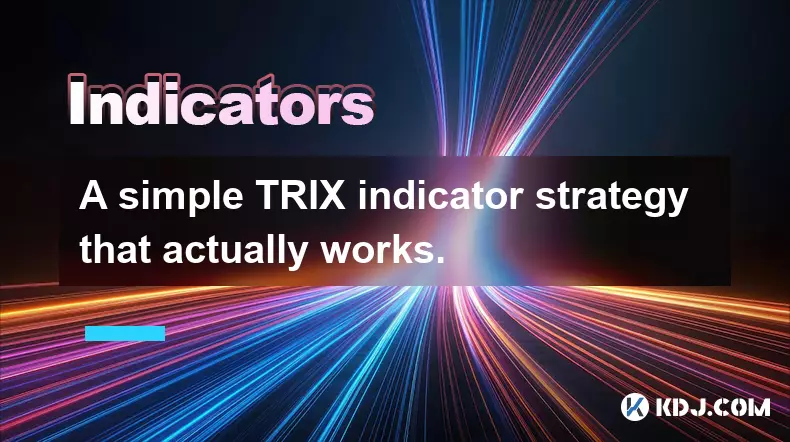
A simple TRIX indicator strategy that actually works.
Nov 08,2025 at 05:39pm
Understanding the TRIX Indicator in Crypto Trading1. The TRIX (Triple Exponential Average) indicator is a momentum oscillator designed to filter out s...

What's the best way to learn the TRIX indicator?
Nov 10,2025 at 12:39pm
Understanding the Basics of the TRIX Indicator1. The TRIX (Triple Exponential Average) indicator is a momentum oscillator designed to filter out short...

How do professional traders use the TRIX indicator?
Nov 06,2025 at 04:40pm
Understanding the TRIX Indicator in Crypto TradingThe TRIX (Triple Exponential Average) indicator is a momentum oscillator used by professional trader...

Can I use the TRIX indicator on my mobile trading app?
Nov 07,2025 at 07:40pm
The TRIX indicator, a momentum oscillator designed to filter out short-term fluctuations and highlight long-term trends, has become increasingly popul...

How to use the TRIX indicator in a sideways market?
Nov 10,2025 at 03:00pm
Bitcoin’s Role in Decentralized Finance Evolution1. Bitcoin remains the cornerstone of decentralized finance, serving as both a store of value and a b...

How to code a simple TRIX indicator script in Pine Script?
Nov 07,2025 at 06:20am
How to Code a Simple TRIX Indicator in Pine Script The TRIX (Triple Exponential Moving Average) indicator is widely used in cryptocurrency trading to ...

A simple TRIX indicator strategy that actually works.
Nov 08,2025 at 05:39pm
Understanding the TRIX Indicator in Crypto Trading1. The TRIX (Triple Exponential Average) indicator is a momentum oscillator designed to filter out s...
See all articles










































































